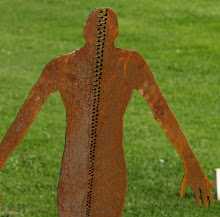The Royal Institution (RI) has a long and venerable tradition of supporting science education and communication. Its Christmas lecture series are renowned. Its web site tells us that Michael Faraday FRS was director of the RI between 1825 and 1867.
But now we find the RI lead by a person who regularly uses the mass media to make bizarre headline grabbing claims which have a tenuous relationship to scientific evidence. We are told by Lady Greenfield (Wintour, Guardian, 24th Feb 2009) that facebook and bebo risk 'infantilising' the mind. This is not good public communication of science.
Some have commented (see Jane O'Grady, Guardian May 2008; Colin Blakemore, Today programme 25th Februay 2009) on the speculative nature of Greenfield's writing, and on the fact that she ignores the science that is available (e.g. Ellison, Steinfield & Lampe, 2007; Kraut, Brynin, Kiesler, 2006). Although the authors of these articles would be the first to admit that there are many unanswered questions, their work is at least grounded in evidence. Blakemore, with the generosity that one affords a colleague, credits Greenfield with working from 'anecdotal evidence'. But is it desirable for the director of an institution dedicated to the public communication of science to work so brazenly and persistently with anecdotal evidence?
Greenfield is not alone. Others with academic credentials, e.g. Aric Sigman have made similarly unsubstantiated claims (see http://willreader.blogspot.com/). But Greenfield is the director of the RI, surely she has a particular responsiblity to communicate science, not to speculate wildy?
Public communication of science can be done well. In his blog Ben Goldacre (http://www.badscience.net) emphasises the need to communicate the value of evidence based reasoning. He brings statistics to life and shows how statistical reasoning can be relevant to pressing issues of our time. He debunks quacks and provides one voice against those who seek to use psuedo scientific arguments for their own purposes.
Somewhat ironically given Greenfield's professional affiliation, first rate communication of science can be achieved using social media, i.e. using exactly the 'infantalising' monster that Greenfield ralies against. Goldacre, like many scientists, writes a blog. Social media might, as used by Goldacre, provide our best shot at a force to counter those whose use of the mass media has the potential to so badly damage the public understanding of science.
Where is the RI to go? How can it fulfill its mission of communication of science when its director insists on using the mass media to deliver opinions that have no scientific basis. Perhaps one way forward would be to retire a director who is so taken with the lure of the mass media and instead seek out those who make such fantastic use of the same social media that are the object of its director's unscientific speculations.
References
Ellison, N. B., Steinfield, C., & Lampe, C. (2007). The benefits of Facebook "friends:" Social capital and college students' use of online social network sites. Journal of Computer-Mediated Communication, 12(4). http://jcmc.indiana.edu/vol12/issue4/ellison.html
Goldacre, B. (2009). www.badscience.com
Kraut, R.E., Brynin, M. and Kiesler, S. (2006). Computers, Phones, and the Internet: Domesticating Information Technology. Oxford University Press.
O'Grady, J. (2008). Cyberspaced out. http://www.guardian.co.uk/books/2008/may/31/scienceandnature.society
Wintour, P. (2009).
http://www.guardian.co.uk/uk/2009/feb/24/social-networking-site-changing-childrens-brains
Reader, W. (2009). Transgressing the boundaries. http://willreader.blogspot.com/
Wednesday 25 February 2009
Subscribe to:
Posts (Atom)
